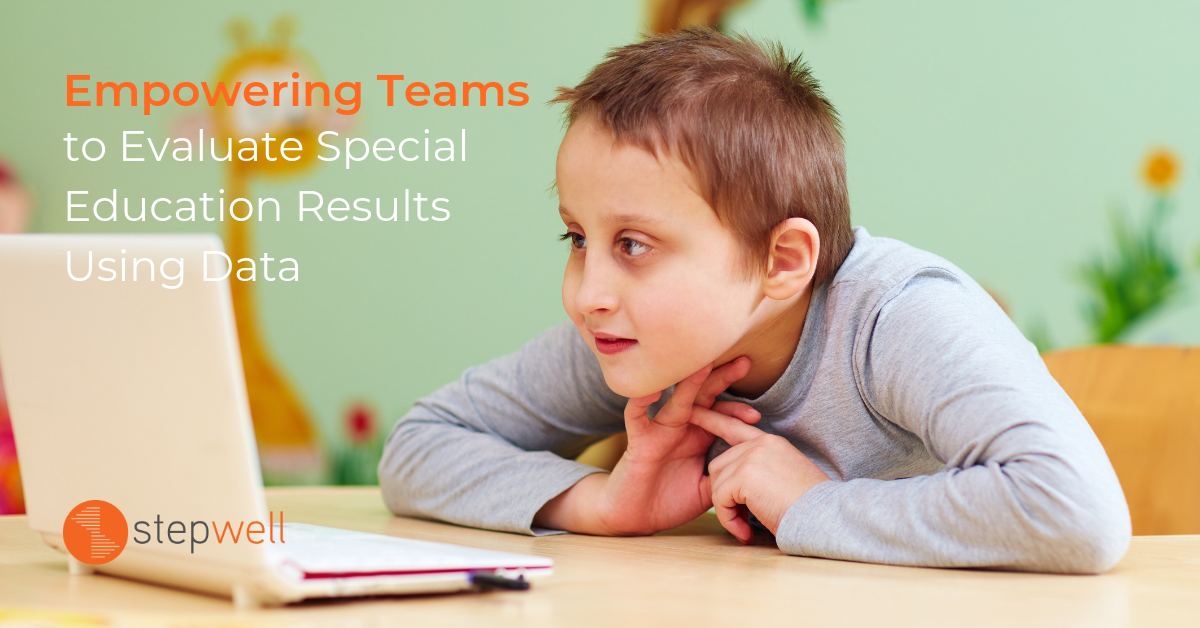By Andrew Henry
The first post in this series focused on the overall need to make improvements to special education reporting by focusing on results rather than just compliance with federal requirements. Our opportunity in moving beyond mere data collection is to deliver more technical assistance and services to support students with disabilities, leading to improved learning gains. This is the concept behind Results-Driven Accountability—shift the focus from compliance to quality special education.
This move from compliance to results is certainly not a new idea. The theory of action behind a well-intentioned IDEA compliance system has been to establish district-level compliance with the “right” indicators, and systemic change would likely follow in local efforts. However, this theory in practice can be cumbersome. The data gathering process to demonstrate compliance often takes months to complete each year at every level of the system, and can be a full-time occupation for many state-level staffers. We now have technology to automate the data gathering, analysis and reporting process, but states and districts continue to struggle to respond appropriately to a results-driven directive, as they are staffed for and limited by old systems and processes.
As we progress through the series, we’ll put Results-Driven Accountability into practice. This post discusses how staff can use data to think differently about student results, and then communicate these evaluations between state and local teams.
Training data collectors to become data evaluators
In order to move from compliance to results, administrators must first begin by probing more deeply into data. What could they see if they could look beyond simple metrics to examine the quality of program delivery? What could they learn about the systemic reasons as to why some students struggle even when schools and districts are compliant?
Many school districts and state offices of education have demonstrated dedication and creativity in putting together both technical and organizational systems that facilitate data gathering and reporting. However, with the aid of new technologies and systems, they could streamline data collection and manage data analysis to improve the systems impacting the quality of instruction for students with disabilities. This improvement in data collection is how systems will become capable of moving beyond the relatively straightforward tracking of compliance indicators. To do this effectively, staff need greater visibility into aspects of special education programs that have traditionally been out of reach. They also need to be a part of a system of support that prioritizes program quality to achieve results.
How can Stepwell help state offices build this capacity? We can relieve some of the pressure by collecting data that used to take weeks and months. It will no longer take the effort of a staffer to create the reports needed for a comprehensive review of special education programs—which is often a state’s next activity once they get district data.
We have thought deeply about how our platform can help. Our logical first step was to build technology that energizes data collection and management. Stepwell is designed to not only consume the usual kinds of district level data provided by state data systems, but it can also consume IEP data and present it to a program reviewer in a meaningful way. Without requiring a reviewer to access a hard copy of an IEP while onsite, Stepwell analytics gives staff back the time and energy to instead focus on the effectiveness of these individual programs.
With this kind of technology, state officers can transform from data collectors to data evaluators. With this new mindset, staff can ask questions such as: Has the district been successful in achieving the goal of each individual student’s IEP? Is the program producing a positive benefit that makes each student more capable as identified in their IEP? What is quality and how do we design our programs to deliver quality student outcomes?
Ultimately, the new process enables staff to determine if the student is receiving educational benefit for participating in the program.
Quality reporting requires collaboration
Local district and state staff often work independently from each other, communicating by necessity, coordinating if required, but seldom collaborating to improve results. It is precisely by sharing common goals and working towards them as a single team that enables state staff to contribute to local initiatives to improve quality.
Focusing on collaboration and sharing data, districts have the ability provide important insights that can result in system improvement. Freed from some of the many data management responsibilities required of states, staff can bring to bear improvement strategies, assistance and resources that are unique to SEAs.
What characteristics does a state system orientated towards Results Driven Accountability have, and how can we emphasize them? Collaboration requires trust and openness to be successful. Both districts and state staff need to share schedules, protocols, and internal benchmarks to coordinate. Discrete, low level data and opinions need to be shared seamlessly in order to merge their efforts into a cohesive whole.
The goal is to improve the educational experiences and student outcomes for special education students. Collaboration between districts and state education offices can be a significant success factor in achieving this goal.
At its core, Stepwell uses a familiar approach to improvement. Most professionals are familiar with the idea of continuous improvement: gather, study, plan, do – and repeat. This is actually what school improvement initiatives have done for decades. Technology allows us to fulfill our compliance obligation through improved reporting, while shifting to a new conversation about how we can demonstrate through Results-Driven Accountability that we are providing the best possible educational outcomes for our special education students.
Andrew Henry is the founder of Red Cedar Software Group and the creator of Stepwell, a web-
based platform that helps drive continuous improvement in special education with automated
best practices and on-demand access to the right data.
[Note: this post is the second in a five-part series on how state education officials can improve
special education results by focusing on Results-Driven Accountability.]
